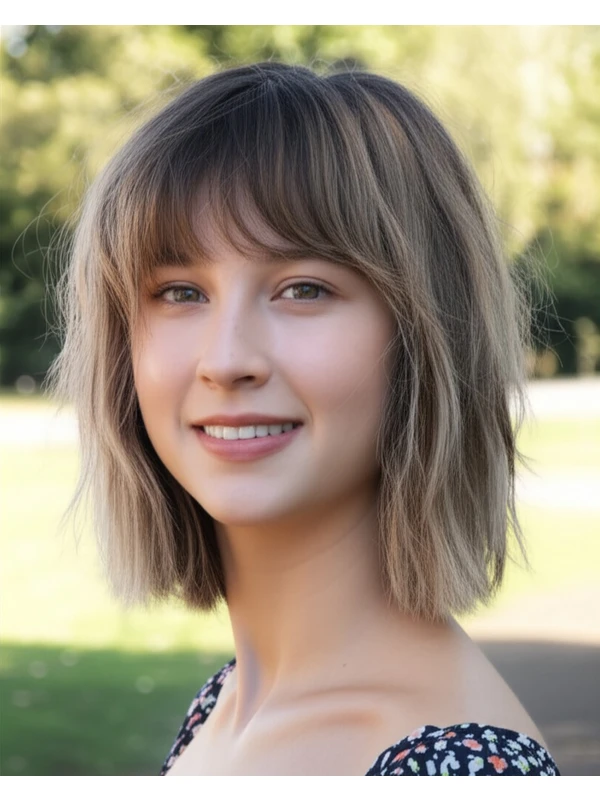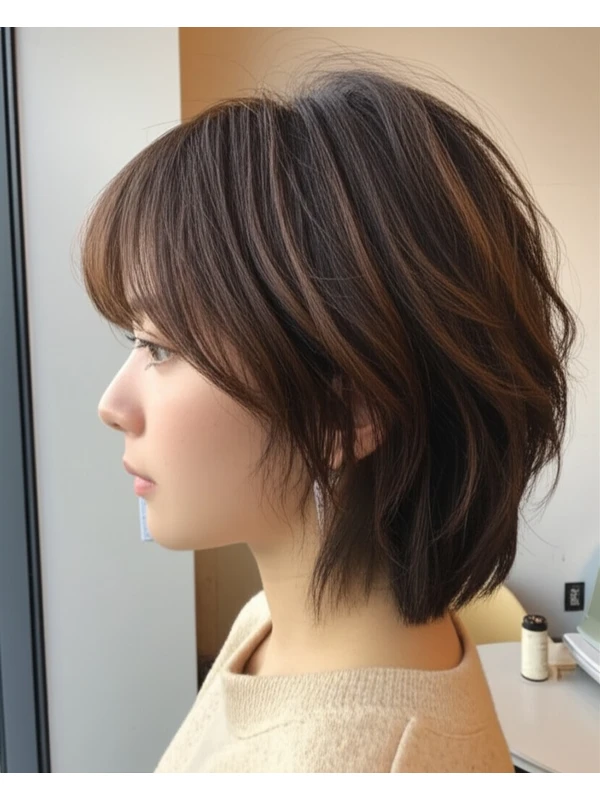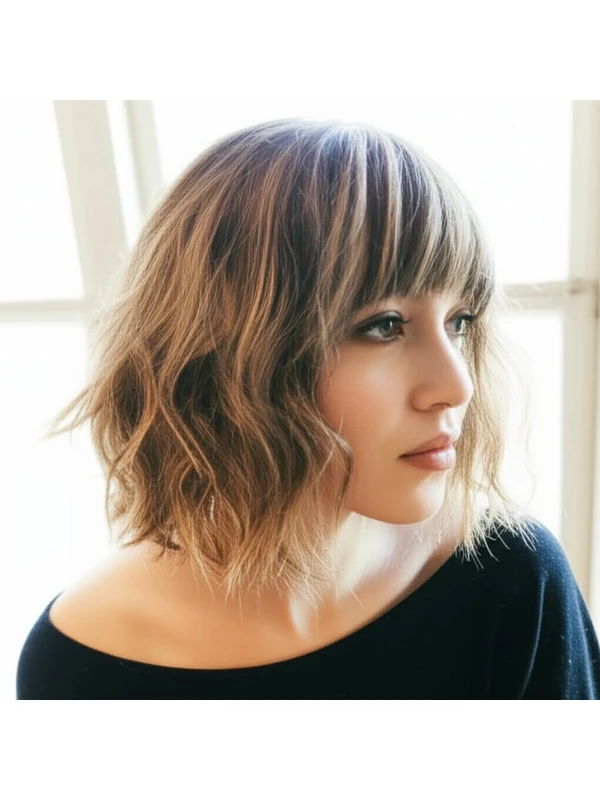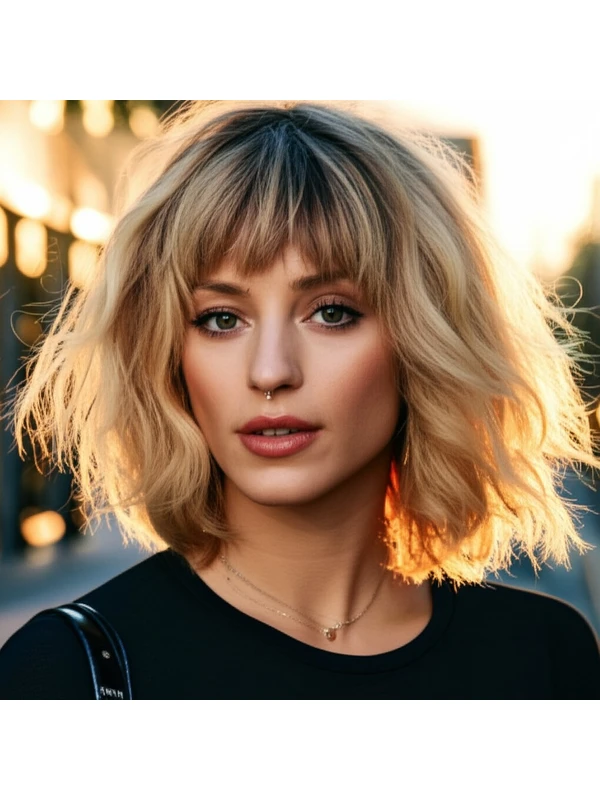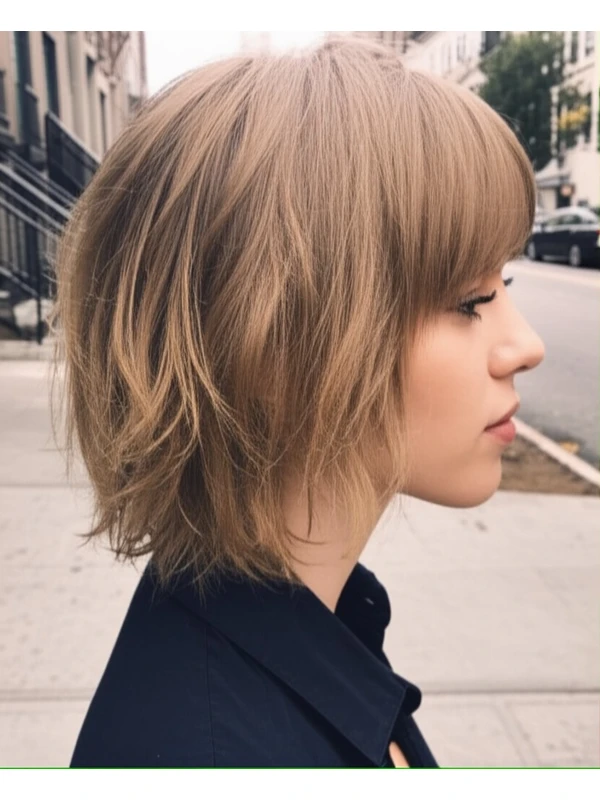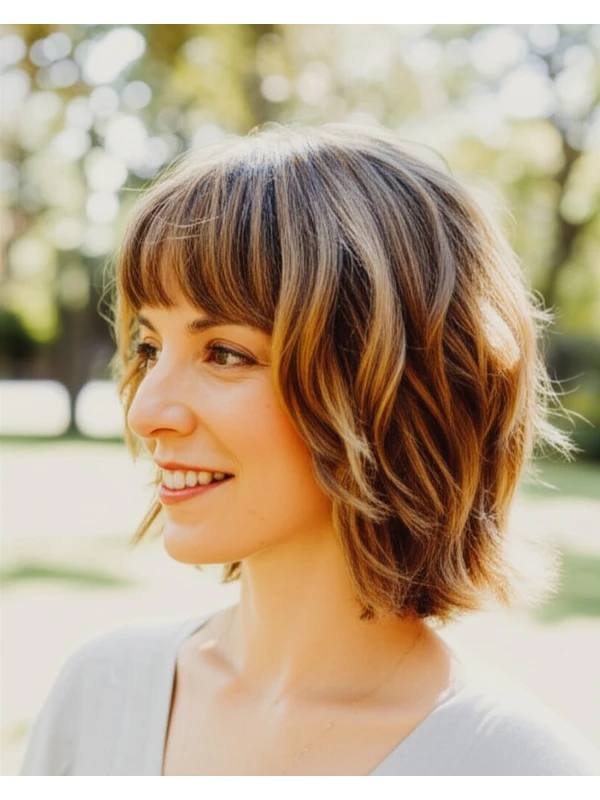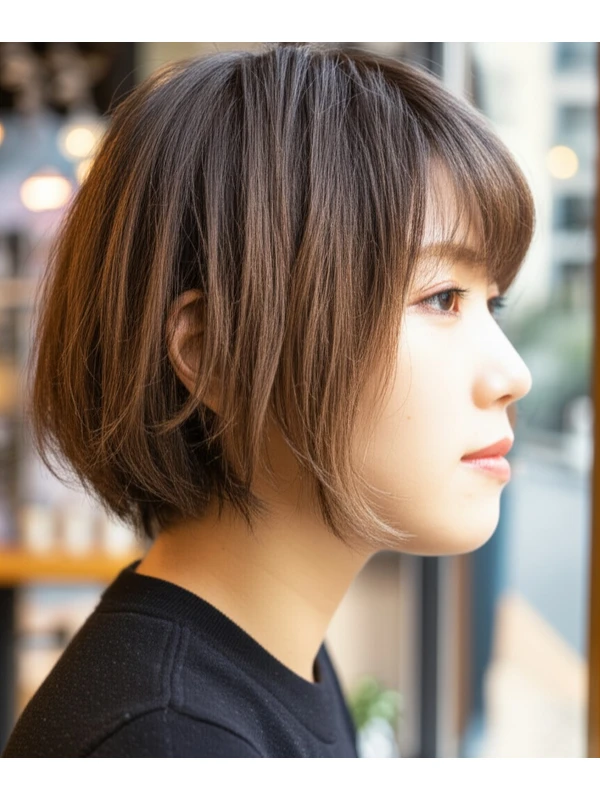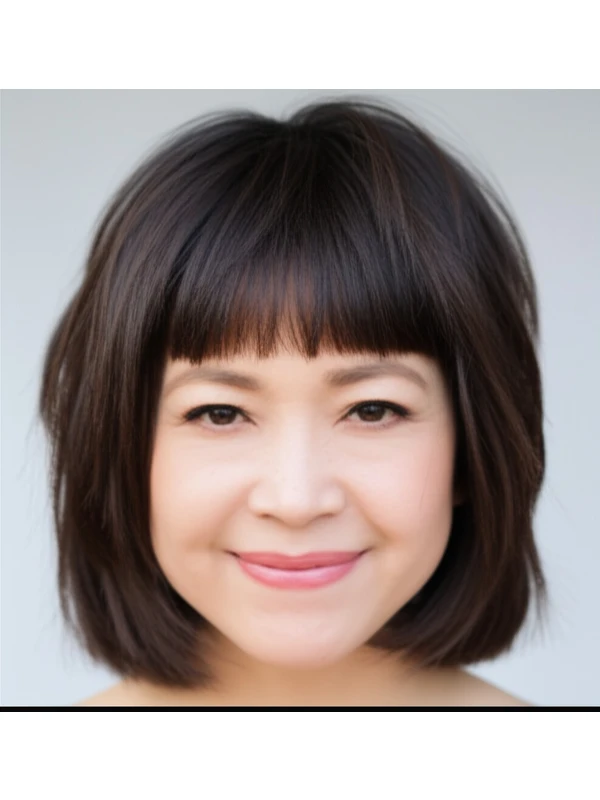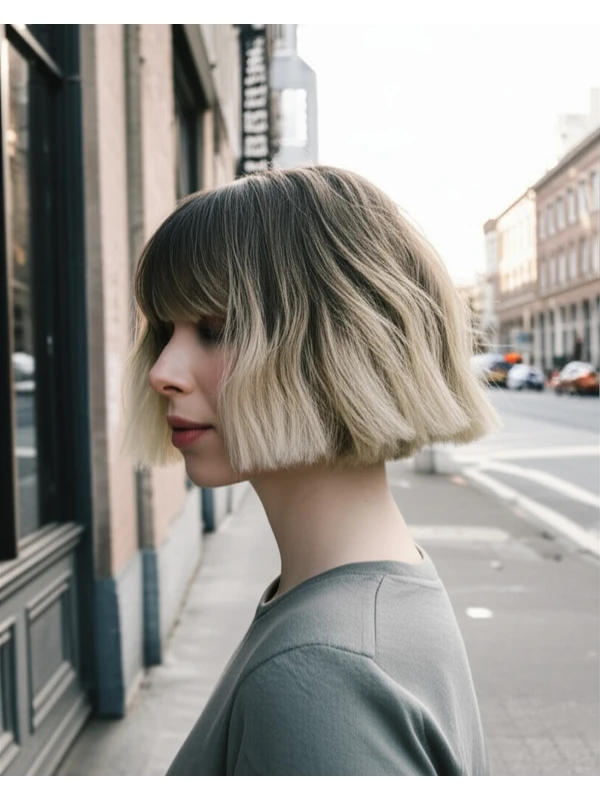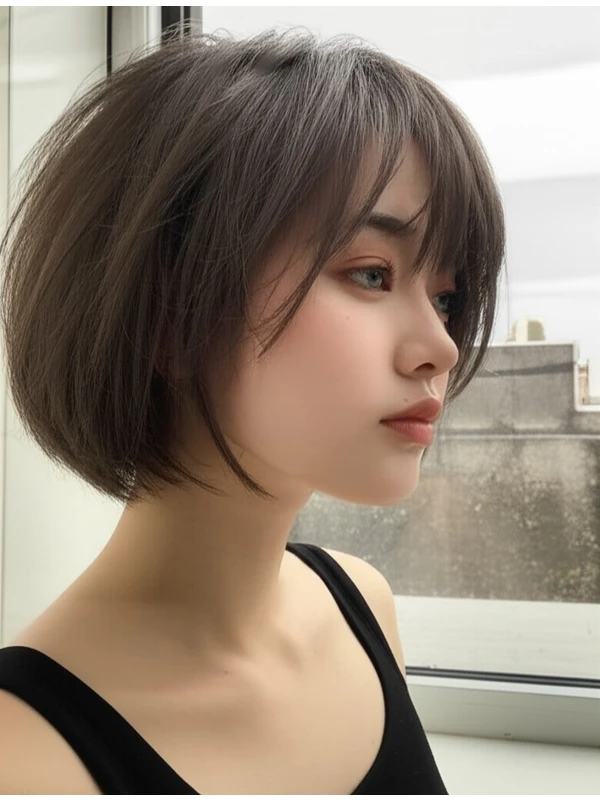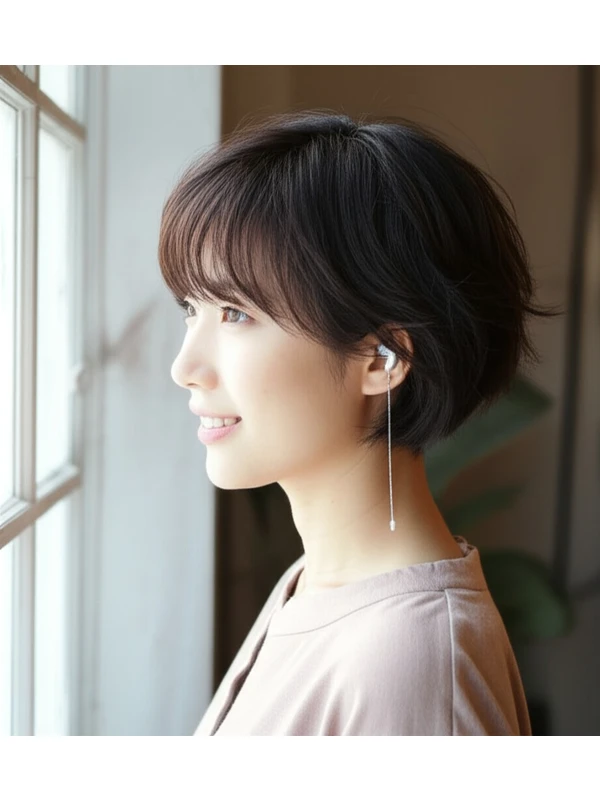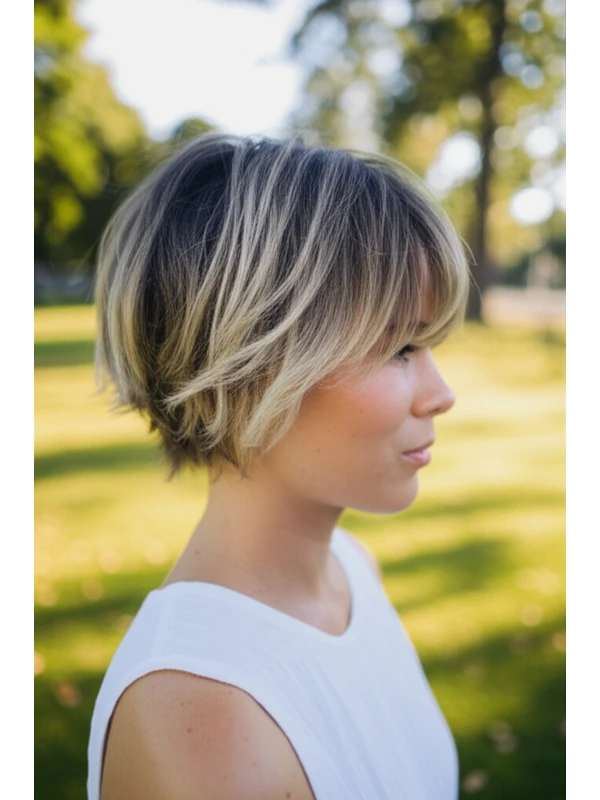#Shag Bangs: The Cool-Girl Cut You Need to Know
The shag is back – and it's not just about the layers anymore! Shag bangs are taking over as a trendy, versatile way to update your look. This guide will walk you through everything you need to know about this edgy yet effortless style.
#1) Background & Definition: What Are Shag Bangs?
Shag bangs aren’t just bangs. They're an integral part of the overall shag haircut, which is characterized by choppy layers and a tousled texture. Think '70s rock stars meets modern cool.
- Cut Geometry: The cut focuses on creating movement and volume through disconnected layers that fall around the face. Shag bangs are typically shorter in the middle and gradually lengthen towards the sides, blending seamlessly into these layers.
- Key Features: Disconnected layers, textured ends, a lived-in feel, and fringe (the shag bang!) that frames the face.
- Typical Length Ranges: Bangs can range from brow-grazing to cheekbone-skimming or even longer, depending on your preference and face shape. The overall shag length can vary too – from chin-length bobs to shoulder-length styles and beyond.
- Alternative Names: Fringe Shag, Layered Bangs with a Shag Cut, Textured Face Framing
#2) Face Shape Fit: Finding Your Perfect Shag Bangs
Shag bangs are surprisingly versatile but work best when tailored to your face shape. Here’s how they can balance different shapes and what fringe length is ideal:
- Oval: Lucky you! Oval faces suit almost any shag bang style. Experiment with brow-grazing, cheekbone-skimming, or even longer, curtain bangs.
- Round: Soften a round face by opting for longer, side-swept shag bangs that create angles and elongate the appearance. Avoid blunt, straight-across bangs which can emphasize roundness. A slightly off-center part also helps.
- Square: Shag bangs soften strong jawlines. A textured, piecey fringe that falls at or below the cheekbones is ideal. Angled bangs work well too!
- Heart: Balance a wider forehead with longer, wispy shag bangs that blend into face-framing layers. Side-swept styles are also flattering. Avoid short, blunt fringes which can accentuate the width of your forehead.
- Diamond: Shag bangs soften diamond shapes by highlighting cheekbones and creating balance. Curtain bangs or slightly angled fringe work beautifully.
- Oblong (Long): Shorten an oblong face with a fuller shag bang that hits at the eyebrows or just below, creating width. Side-swept styles are also flattering to break up length.
#3) Body Proportions & Height Guidance: Shag Bangs for Every Silhouette
The way your body proportions and height impact how a shag bang looks is all about balance and visual harmony.
- Petite: Shorter shag bangs (brow-grazing or cheekbone-skimming) prevent the face from looking overwhelmed. Keep layers shorter too, to avoid adding unnecessary volume.
- Average Height: Most lengths work well! Experiment with different bang styles and layer placements.
- Tall: Longer shag bangs that graze the chin or collarbone can help balance a taller frame. More dramatic layering throughout adds visual interest.
- Narrow Shoulders: Face-framing layers, including the shag bangs, add width to narrow shoulders. Volume at the crown is also beneficial.
- Broad Shoulders: Shorter, more tapered shag bangs and layered styles can help soften broad shoulders by drawing attention upwards towards your face.
- Short Neck: Avoid very long, blunt-cut bangs that can accentuate a short neck. Angled or side-swept options are best.
#4) Works Best With Hair Types & Densities: Finding Your Shag Bangs Sweet Spot
Shag bangs thrive on texture! Here’s how they play with different hair types and densities:
- Straight: Straight hair showcases the sharp angles of shag bangs beautifully, but may require more styling to achieve that effortless, textured look.
- Wavy: Wavy hair is a natural fit for shag bangs – the layers enhance your existing wave pattern! Embrace the texture with minimal effort.
- Curly/Coily: Shag bangs work wonders on curls and coils, adding shape and definition. However, shrinkage needs to be factored in (see below).
- Fine Hair: Layering can make fine hair appear fuller. Ask your stylist for point-cutting techniques to create even more texture and avoid a “thinned out” look.
- Medium/Thick Hair: Shag bangs work well with medium to thick hair, providing balance and movement. Your stylist may need to thin layers further to prevent the style from feeling too heavy.
Shrinkage Alert (Curls & Coils): Curls and coils can shrink significantly when dry! Communicate this clearly to your stylist so they cut the bangs long enough to account for shrinkage. A good rule of thumb is to add an extra inch or two.
#5) Styling Variations: From Sleek to Textured & Everything In Between
Shag bangs are incredibly versatile – here’s how you can style them differently:
- Sleek vs. Textured: Use a smoothing serum for a sleek, polished look. For texture, use sea salt spray or texturizing cream and scrunch!
- Middle vs. Side Part: A middle part creates symmetry; a side part adds softness and asymmetry.
- Fringe Variations: Curtain bangs (longer, face-framing), blunt fringe (more structured), wispy bangs (soft & airy).
- Occasion Styling:
- Casual: Air dry with texturizing spray.
- Office: Smooth the bangs down slightly with a flat iron and add shine serum.
- Evening: Add volume at the roots, curl the ends of your layers, and use hairspray for hold.
#6) Maintenance: Keeping Your Shag Bangs Looking Fresh
- Trim Cadence: Every 4-8 weeks to maintain shape and prevent bangs from growing out too long.
- At-Home Routine: Gentle shampoo & conditioner; weekly deep conditioning mask (especially important for curls/coils).
- Heat vs. Air Dry: Air drying enhances the natural texture, but a diffuser can speed up dry time and define curls. Heat styling should be used sparingly to avoid damage.
- Product Checklist:
- Shampoo & Conditioner: For your hair type!
- Leave-In Conditioner: Especially for curly/coily hair.
- Texturizing Spray or Cream: To enhance texture.
- Hairspray: For hold and finishing.
- Estimated Daily Styling Time: 5-15 minutes, depending on desired style and hair type.
#7) Grow-Out Roadmap: The Evolution of Your Shag Bangs
- Months 1-3: Bangs are at their shortest and most defined. Maintain shape with regular trims.
- Months 3-6: Bangs begin to lengthen, softening the overall look. You can start experimenting with different styling techniques (e.g., pinning them back).
- Beyond 6 Months: The shag bangs blend more seamlessly into your layers, creating a softer, more blended appearance.
#8) Color Pairings: Enhancing Your Shag Bangs with Hue
- Cool Undertones: Ashy blondes, cool browns, silver-toned highlights enhance the edgy feel of the shag.
- Warm Undertones: Honey blonde, caramel brown, copper tones add warmth and dimension.
- Low-Commitment Options: Balayage or babylights to subtly brighten layers and face-framing pieces.
#9) Season & Occasion Guide: Styling for Every Moment
- Spring/Summer: Embrace the airiness! Air dry with minimal product, let your natural texture shine.
- Fall/Winter: Add warmth with richer tones and use a texturizing cream to create definition against colder weather.
- Work: Sleek bangs, controlled layers for a professional look.
- Weddings/Parties: Voluminous shag with playful styling – think curls, braids, or decorative pins.
#10) Cost & Time: Salon Details
- Salon Time: Typically 45-90 minutes.
- Price Range: Expect to pay a moderate to higher price range for this style (relative terms). The cost will depend on your location and stylist’s experience.
#11) Pros & Cons: The Trade-offs
Pros: Versatile, flattering on many face shapes, adds volume and texture, trendy! Cons: Requires regular trims, can be time-consuming to style (depending on hair type), may not suit extremely fine or very short hair.
#12) Salon Consultation Script: Questions to Ask Your Stylist
- "I'm interested in shag bangs – could you show me some examples of different lengths and styles?"
- “What length would be most flattering for my face shape?”
- "How will the shag bang interact with my existing layers/hair texture?"
- "Can we factor in shrinkage if I have curly or coily hair?"
- "How much time do you estimate it will take to style this look daily?"
#FAQs: Your Shag Bangs Questions Answered
- Are shag bangs difficult to style? It depends on your hair type! Some people can air dry and go, while others might need a few extra minutes with styling products.
- Can I get shag bangs if I have thin hair? Yes, but communicate this to your stylist so they can use techniques that create the illusion of fullness.
- How do I prevent my shag bangs from looking too blunt? Ask for point-cutting and texturizing to soften the edges.
- What if I don’t like how my shag bangs look after the cut? Communicate your concerns immediately! Your stylist can often adjust the style.
- Can I get shag bangs with a bob haircut? Absolutely! Shag bangs work beautifully with bobs of all lengths.
- Do I need to use special products to maintain my shag bangs? Not necessarily, but texturizing products and hairspray can help enhance the style.


